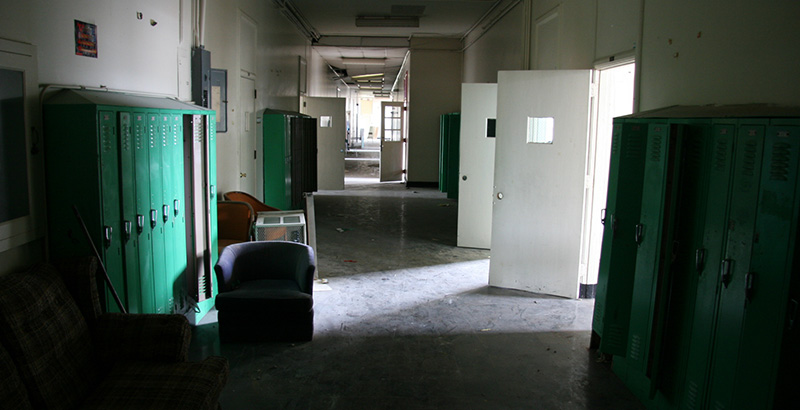Otero: Decrepit Schools Make Recovering Lost Learning Even Harder. Federal Relief Funds Can Pay for Much-Needed Upgrades

Tackling learning loss that has resulted from the pandemic is today’s most pressing education policy concern. Critical remedies like intensive tutoring, added instructional time and early warning indicators have gotten a lot of attention. But there is another solution that is ripe for action, one that undergirds all other efforts to address learning loss: upgrading school buildings.
The state of school facilities in underserved communities is, in a word, poor. A Government Accountability Office report from last year found that half of schools nationwide need to repair or replace multiple major systems, such as heating, cooling or plumbing, and 41 percent needed updates to HVAC systems. In Detroit, it would take $500 million to bring all schools into good condition. In 2018, Baltimore shuttered schools due to inadequate heating during an extremely cold winter. The American Society of Civil Engineers gives school infrastructure in America a D-plus.
If broken school buildings were just an inconvenience or a matter of aesthetics, their condition wouldn’t be of urgent concern. But the buildings in which students learn have a big impact on their thinking and academic performance. A 2019 synthesis of 250 studies, spanning 30 years, by the Harvard T.H. Chan School of Public Health found that environmental issues in school buildings, from mold to poor ventilation to noise, lighting and more, can adversely impact learning. “Improving the school building may well be the most overlooked means of improving student health, safety and academic performance,” the authors concluded.
The good news is that school and district leaders now have an important and unique opportunity to address this problem. The American Rescue Plan, adopted in March, provides $130 billion directly for schools and another $350 billion for state and local governments. This one-time injection of funds must be spent by 2024 and, therefore, should not be used to hire additional personnel or otherwise grow school budgets. Over $110 million goes directly to school districts via the Title I formula, with limited requirements on how it should be spent. Ventilation, investments in technology and other upgrades to help students get back to school are specifically mentioned in the law, and the overarching guidance for school district leaders is to invest in evidence-based practices to advance equity and address COVID-related learning loss.
These funds, coupled with the $13.2 billion in education funding from the CARES Act allocated last spring, and the $54.3 billion in the Coronavirus Response and Relief Supplemental Appropriations Act, enacted in December, means that the per-pupil allocation for K-12 education this year and next is more than six times what it has been in recent years. And more money may yet flow, as President Joe Biden has proposed more than $100 billion specifically for school repairs and modernization in the recently unveiled infrastructure package.
These funds offer an opportunity that will not come again soon. American schools in high-poverty areas are in dire need of improvement, and school leaders in these communities have been hamstrung due to the overreliance on local funding for capital projects. Capital investments in high-poverty schools are $300 less per student, on average, than in low-poverty schools, a pattern that compounds the massive inequities in teacher quality, instructional rigor and more that pervade our education system.
The COVID pandemic has brought the digital divide and its ramifications for students to the forefront of the public consciousness, but the need to upgrade the facilities in which underserved students learn extends far beyond broadband and Chromebook access. Now is the moment for equity-minded education leaders to start crossing items off the nation’s $200 billion school facilities to-do list in order to bring all schools into good condition.
We have asked a lot of American kids this year, and they have proved resilient and brave while attending school in cramped closets, basements and even parking lots. Policymakers have allocated substantial resources to mitigate the learning loss that has resulted from the pandemic, but if the schools students walk back into remain dilapidated, their recovery will be slow because the condition of those buildings will continue to hamper their academic growth. Repairing and modernizing school facilities should be central to addressing learning loss, and education leaders should use this unprecedented one-time investment to make all schools healthy, safe and modern learning environments.
Mildred Otero is senior vice president at Leadership For Educational Equity and former lead education counsel on the Senate Health, Education, Labor and Pensions (HELP) Committee.
Help fund stories like this. Donate now!

;)